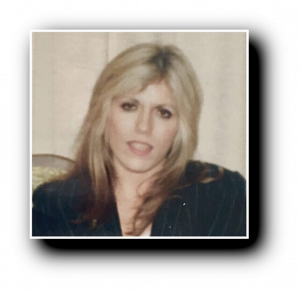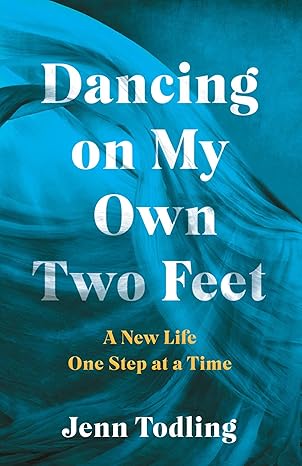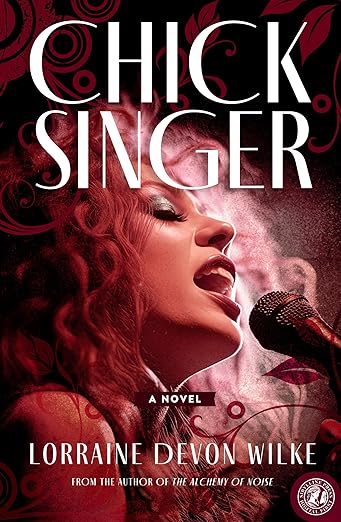Facing The Blank Canvas: Have the Self Confidence to Tell Your Story
Facing The Blank Canvas: Have the Self Confidence to Tell Your Story
 In Henry James’ short story “The Madonna of the Future,” an older artist shows his visitor a blank canvas where the painting he has envisioned will one day materialize.
In Henry James’ short story “The Madonna of the Future,” an older artist shows his visitor a blank canvas where the painting he has envisioned will one day materialize.
“The elements are all here,” the artist says, pointing to his head.
His excuse for not doing so when he first had the idea? “I waited and waited to be worthier to begin and wasted my life in preparation.”
So many of us can identify with this artist: We tell people we have a novel in us, but somehow don’t start it, let alone finish it, using every excuse we can find.
I was the same way for years, using my busy life as my excuse. But was it something else? Was I like the artist who kept waiting to be sufficiently worthy to see a writing project through?
I remember one morning sitting on the floor in my apartment while in graduate school, surrounded by notes, outlines and one iconic novel.
I was determined to begin my project—a self-help book based on Gone With The Wind—that would explain to female Adult Children of Alcoholics why they, like the book’s protagonist, Scarlett O’Hara, yearned for unavailable men (the Ashleys) instead of the ones right in front of them who already loved them (the Rhetts).
My premise was that having an unavailable alcoholic father resulted in a daughter’s yearning for such a man in her romantic life.
I had little to go on: In the novel, Scarlett’s father was said to have “a steady head for whiskey,” but he had been drinking when he was thrown from his horse while jumping fences.
That was enough for me.
As one of those daughters, I felt I could interweave Scarlett’s story with my own, making it representative for all women with similar backgrounds.
I was also hoping I could convince myself of the book’s premise as I wrote it. At that stage, I was more of an unenlightened Scarlett than the transformed narrator such a book needed.
It’s important to note that, back then, Scarlett had not yet undergone the critical re-evaluation she has today as the spoiled daughter of a Civil War plantation owner. She was still primarily admired: a headstrong, ambitious, resourceful, passionate woman, the perfect hook for my self-help guide.
My enthusiasm for the project waned after that first day. Again, I blamed my busy life. But as Charles Bukowski reminds us in his poem “air and light and space and time,” people will use any excuse not to write: family, jobs, or “something.” I would argue that “something” can be a feeling of unworthiness, especially with us women.
Because my desire to write was stronger than my doubts, I worked on the manuscript from time to time and eventually sent out a proposal to several New York agents.
To my surprise, I got a fast reply. One of the most well-known agents in New York at the time asked to see a few more chapters. She liked what she saw, she told me, adding that as she had already successfully agented several self-help books, she would be the perfect one to represent me.
Then I froze. I was in over my head, I told myself. I wasn’t sufficiently knowledgeable about the subject to advise other women, let alone write a whole a book about it. What Tillie Olsen, author of Silences, called “the knife of perfectionist attitude in art and life” was at my throat—and I was holding it.
As a result, I thought I needed to add professional gravitas in the form of a psychologist’s insights to my first-hand reflections—even though the agent had requested just two more chapters written by me.
By the time I updated my chapters to include contributions from a psychologist, several weeks had passed. Then, when I had the package ready to send, my co-author told me that she was withdrawing from the project, preferring to go it alone with her own book. I had to scramble to put together a new proposal featuring only my input.
In the meantime, the agent withdrew her request. I had waited too long. I assumed my dream of being an author was over. The disappointment—and shame—I felt couldn’t be measured. Publishing was for other people, not for me.
When I came across my manuscript several years later, I realized it would make a better novel than a self-help book, a novel I could finish by myself. I began typing out a tale about a woman who had spent a good portion of her adult life pursuing unavailable men. I tamped down the Scarlett references and filled the pages instead with characters born from my imagination.
Eventually, I finished the manuscript and sent it out.
After some agent interest, I sent it directly to a few small presses, getting an offer from Wild Rose Press Inc. I was so thrilled it had found its home. My novel Babe in the Woods debuts June 7.
What my experience taught me is this: If we have a story to tell, then we should write it down, stick with it, trust ourselves and ease up on the self-criticism. The world is filled with books whose authors lack an M.F.A. or a writing environment with a perfect combination of “air and space and light.” Readers want to read books by those whose voices are authentic, compelling and original. The journey doesn’t end with a first draft, but the first step begins with our belief that we’re worthy to transfer what’s in our heads onto the canvas.
—
Jude Hopkins’s novel, Babe in the Woods, from Wild Rose Press, debuts June 7. Hopkins has published essays in The Los Angeles Times, Medium, and elsewhere, as well as poetry in numerous journals and magazines, California Quarterly and Timber Creek Review, among them. She was named a runner-up in Proximity Magazine’s essay contest judged by Hanif Abdurraqib. Over the years, she taught English at Arizona State University and the University of Pittsburgh at Bradford, to name but two. Hopkins was elected to Phi Beta Kappa while at Dickinson College where she earned her B.A. and received an M.A. from Arizona State University. She is also a member of the Women’s Fiction Writers Association and is currently working on her second novel. Her publications and blog can be found at https://www.judehopkinswriting.net/
Website: https://www.judehopkinswriting.net/
Twitter: @heyjudenotjudy
BABE IN THE WOODS
 It’s September 1995, the first year of the rest of Hadley Todd’s life. After living in Los Angeles, Hadley returns to her hometown in rural New York to write and be near her father. In addition to looking after him and teaching high school malcontents, Hadley hopes to channel her recent L.A. heartbreak into a play about the last moment of a woman’s innocence. But she seeks inspiration. Enter Trey Harding, a young, handsome reporter who covers sports at the high school. Trey reminds Hadley of her L.A. ex and is the perfect spark to fire up her imagination.
It’s September 1995, the first year of the rest of Hadley Todd’s life. After living in Los Angeles, Hadley returns to her hometown in rural New York to write and be near her father. In addition to looking after him and teaching high school malcontents, Hadley hopes to channel her recent L.A. heartbreak into a play about the last moment of a woman’s innocence. But she seeks inspiration. Enter Trey Harding, a young, handsome reporter who covers sports at the high school. Trey reminds Hadley of her L.A. ex and is the perfect spark to fire up her imagination.
The fact that Trey is an aspiring rock star and she has L.A. record biz connections makes the alliance perfect. She dangles promises of music biz glory while watching his moves. But the surprising twist that transpires when the two of them go to Hollywood is not something Hadley prepared for.
BUY HERE
Category: How To and Tips




























